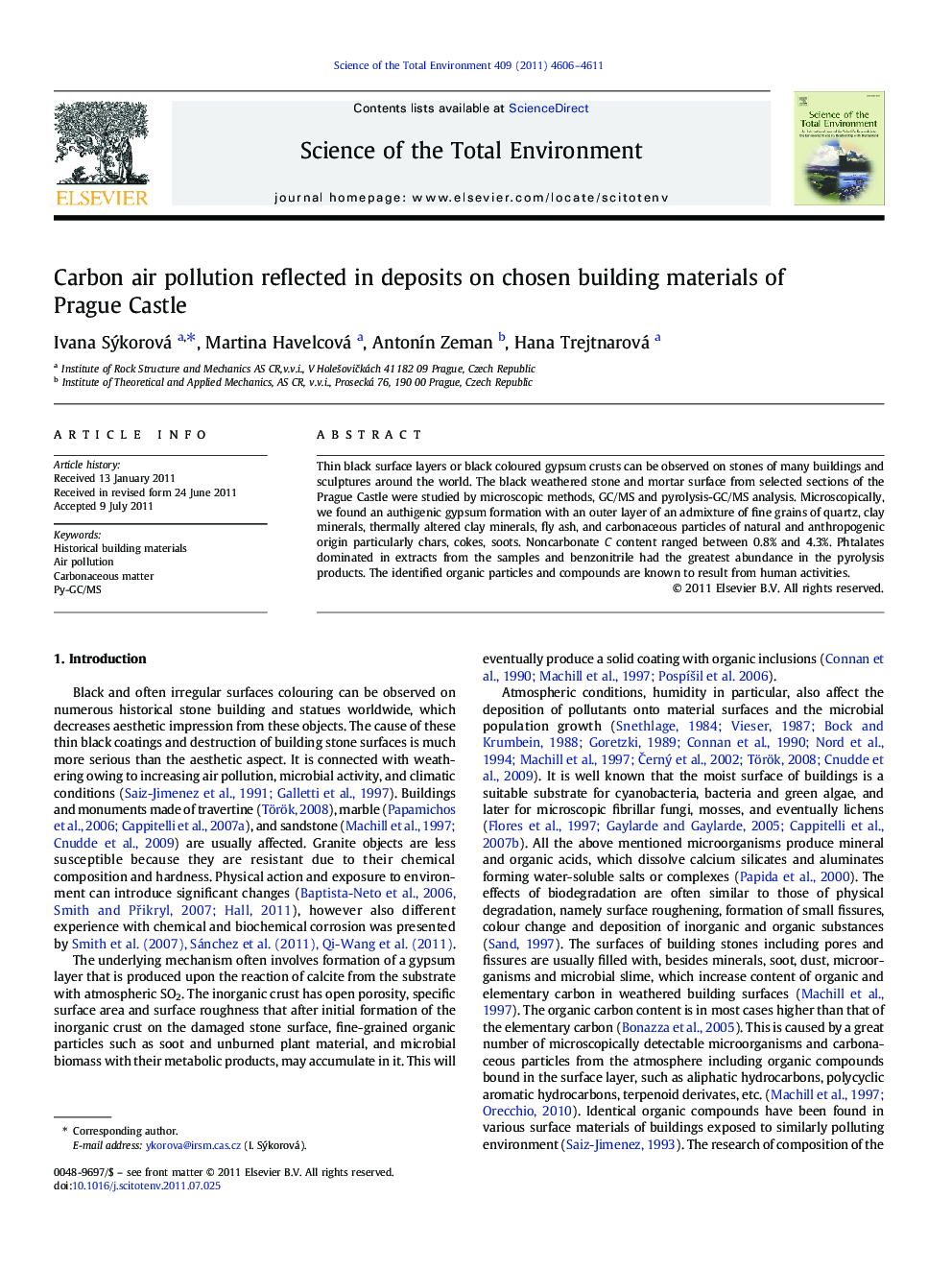| Article ID | Journal | Published Year | Pages | File Type |
|---|---|---|---|---|
| 4430258 | Science of The Total Environment | 2011 | 6 Pages |
Thin black surface layers or black coloured gypsum crusts can be observed on stones of many buildings and sculptures around the world. The black weathered stone and mortar surface from selected sections of the Prague Castle were studied by microscopic methods, GC/MS and pyrolysis-GC/MS analysis. Microscopically, we found an authigenic gypsum formation with an outer layer of an admixture of fine grains of quartz, clay minerals, thermally altered clay minerals, fly ash, and carbonaceous particles of natural and anthropogenic origin particularly chars, cokes, soots. Noncarbonate C content ranged between 0.8% and 4.3%. Phtalates dominated in extracts from the samples and benzonitrile had the greatest abundance in the pyrolysis products. The identified organic particles and compounds are known to result from human activities.
► Thin layer of mineral and carbonaceous particles forms black crusts on buildings. ► Soot, chars, humus, botanical materials and solid bitumen dominate in black layer. ► Phtalates dominated in extracts from the samples. ► Benzonitrile had the greatest abundance in the pyrolysis products. ► The identified organic particles and compounds are result from human activities.
